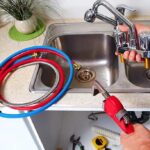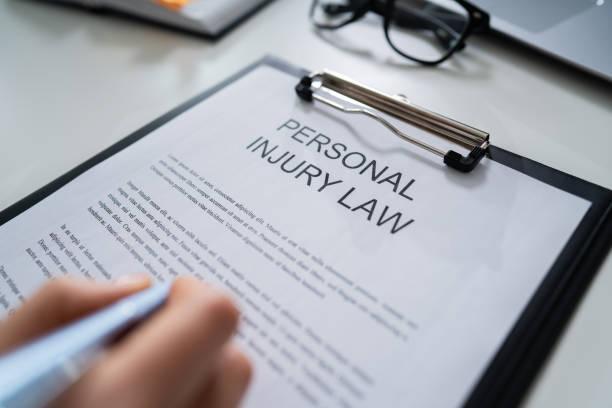Hazardous substances show up in more places than most people think. Factories. Labs. Cleaning cupboards. Even beauty salons. When something goes wrong, it can go very wrong. That’s where a first aider steps in. Fast action can stop injuries from getting worse. It might even save a life.
Here’s a look at five common types of hazardous substance incidents. Alongside each, a breakdown of how first aiders should respond.
1. Chemical Spills
Spills happen. It might be a bottle of cleaning agent knocked over. A drum of industrial solvent that leaks. Or a splash from a lab bench. Some chemicals burn. Some give off fumes. Others stick around on surfaces.
Recognising Common Chemical Hazards
First aiders in workplaces working with chemicals may learn about the risks of hazardous substances in COSHH training. Labels are the first clue. Symbols like skulls, flames or test tubes. But smells, colours or strange textures matter too. A sticky floor. A strong stench. A powder in the air. These signs often mean danger.
First Aid Response Steps
First step: stay calm. Second: don’t touch the spill. Alert others. Clear the area. Open windows if fumes are strong. PPE is key. Gloves. Eye protection. If it’s safe, stop the leak. Use spill kits. If someone’s exposed, rinse the area with water. Keep them away from the chemical. Remove any soaked clothing.
Call emergency services if symptoms are serious or unknown. Keep the person still and talking. Don’t wait for things to get worse.
2. Toxic Gas Exposure
You can’t always see gas. That’s what makes it so dangerous. A faulty valve. A leaking cylinder. Bad ventilation. Any of these can let harmful gases build up. Some knock people out fast. Others burn the lungs slowly.
Symptoms to Watch For
A person might cough. Gasp. Rub their eyes. Or just slump down without warning. They could get dizzy. Struggle to talk. Their skin might turn pale. Or blue. Signs can be mild at first. Then spiral quickly.
Safe First Aid Actions
First aiders trained through a first aid at work course learn to think fast. First rule: don’t rush in. The gas might still be in the air. Open doors and windows if possible. Get help. Emergency services come with the right kit.
If it’s safe, bring the person into fresh air. Sit them down. Loosen clothing. Keep them calm. If they stop breathing, CPR may be needed. Never try to neutralise the gas. That’s for professionals.
3. Skin or Eye Contact with Hazardous Substances
No one plans to get acid in the eye. Or bleach on the skin. But accidents don’t care about plans. When contact happens, time matters.
Immediate Decontamination
Flush the area with clean water. Keep going for at least 10 minutes. For eyes, tilt the head and rinse from the inside out. Don’t let contaminated water spread. Remove any clothing that touched the substance. Use gloves if helping someone else.
Some substances react with water. That’s rare. But if unsure, check the safety sheet or label. Don’t use creams or ointments. Just rinse and wait for help.
4. Ingestion of Harmful Substances
It sounds unlikely, but it happens. A worker takes a sip from the wrong bottle. Someone forgets to wash their hands after handling chemicals. Or a container is mislabelled. The result? A dangerous substance ends up inside the body.
Do’s and Don’ts for First Aiders
Don’t make the person sick. That can cause more harm. Don’t give them anything to eat or drink unless a label says it’s safe. Don’t leave them alone.
Do check the label if there is one. It might give instructions. Do stay calm and ask what was swallowed, how much and when. Try to keep them sitting up. If they’re drowsy or confused, keep them from falling over.
Call 999 or a poison advice centre right away. Time is critical. While help is on the way, gather the container or product info. It helps responders know what to do next.
5. Needle Stick and Biological Exposure Incidents
Needles. Razors. Sharp tools. These can all cause small injuries that carry big risks. Blood-borne viruses. Bacteria. Other infections. First aiders might not think of these as chemical dangers, but they’re still hazardous substances.
First Aid for Needle Stick Injuries
If someone gets pricked or cut, make it bleed. Gently squeeze the wound. This helps push out any germs. Wash the area with soap and warm water. Don’t scrub too hard. That can damage skin and help germs get in.
Cover the wound with a clean dressing. Avoid plasters that stick too tightly. Let the skin breathe if possible.
Reporting and Follow-up
Tell a supervisor right away. The person might need tests or a vaccine. There should be an accident report form. Fill it in. Note the time, what happened, and the name of the item that caused the injury.
If body fluids got in the eyes or mouth, rinse with water. For eyes, tilt the head and wash from the nose outward. For the mouth, spit out any water. Then rinse again.
Biological exposure might not show symptoms at first. But follow-up checks are a must. Early action is better than regret later.
When Hazards Hit, Be Ready
Hazardous substance incidents don’t always come with warnings. Spills. Gas leaks. Splashes. They show up fast and often without notice. The difference between a quick recovery and a serious injury can be a first aider who knows what to do.
Training makes a difference. Spotting the signs. Staying calm. Acting fast. Each skill can protect lives. Whether it’s from “COSHH Training” or a solid “first aid at work course”, knowledge sticks when pressure hits.
These incidents don’t just affect factories or labs. Offices. Hospitals. Schools. Any place with chemicals or biological hazards needs someone who can take charge when things go wrong.
The goal isn’t to become a hero. It’s to help someone through the worst part of their day. A few right steps in the right order. That’s all it takes. And it all starts with being ready.
Let the labels guide you. Let the training lead you. And when something spills, hisses, burns or stings, don’t freeze. Act. That’s what first aiders are there for.




